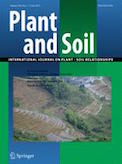
Abstract: High nitrous oxide (N2O) emissions may occur during the non-rice growing season of Chinese rice-upland crop rotation systems. However, our understanding of N2O emission during this season is poor due to a scarcity of available field N2O measurements. Using the static manual chamber-GC technique, seasonal N2O emissions during the non-rice growing season were simultaneously measured at two adjacent rice-wheat and rice-rapeseed fields in southwest China for three consecutive annual rotation cycles (May 2005 to May 2008). Compared to the control, N fertilizer applications significantly enhanced soil N2O emissions from both wheat and rapeseed systems. Seasonal cumulative N2O fluxes from wheat systems were on average 2.6 kg N ha−1 for the recommended practice (RP [150 kg N ha−1 ]) and 5.0 kg N ha−1 for the conventional practice (CP [250 kg N ha−1 ]). Lower N2O emissions were observed from the adjacent rapeseed systems. Average cumulative seasonal N2O fluxes from rapeseed were 1.5 and 2.2 kg N ha−1 for the RP and CP treatments, respectively. The first 3 weeks after N fertilization were the “hot moment” of N2O emissions for both the wheat and rapeseed systems. The lowest yieldscaled N2O fluxes for wheat were obtained at the RP treatment (mean: 0.81 kg N Mg−1 ) while for rapeseed the CP treatment produced the lowest yield-scaled fluxes (mean: 0.79 kg N Mg−1 ). On average, the direct N2O emission factors (EFd) for the wheat system (1.76 %) were over two times higher than for the rapeseed system (0.73 %). Intercropping of rapeseed tends to result in lower N2O emissions than wheat for rice-upland crop rotation systems of southwest China, indicating that either the N fertilization or the cropping system need to be considered not only for improving the estimate of regional and/or national N2O fluxes but also for proposing the climate-smart agricultural management practice to reduce N2O emissions from agricultural soils.








